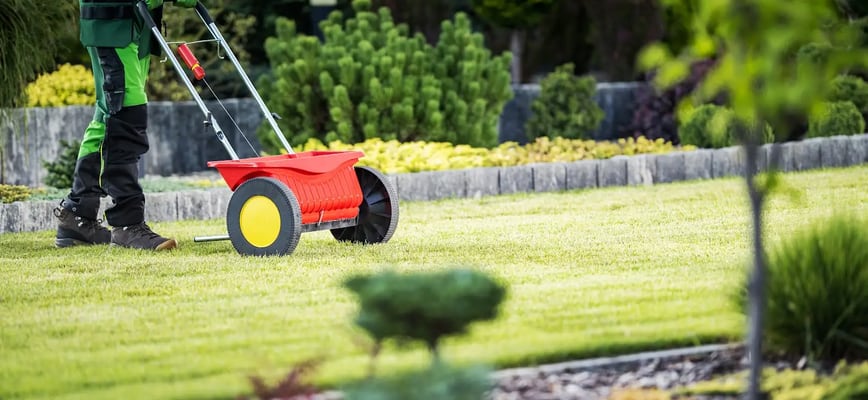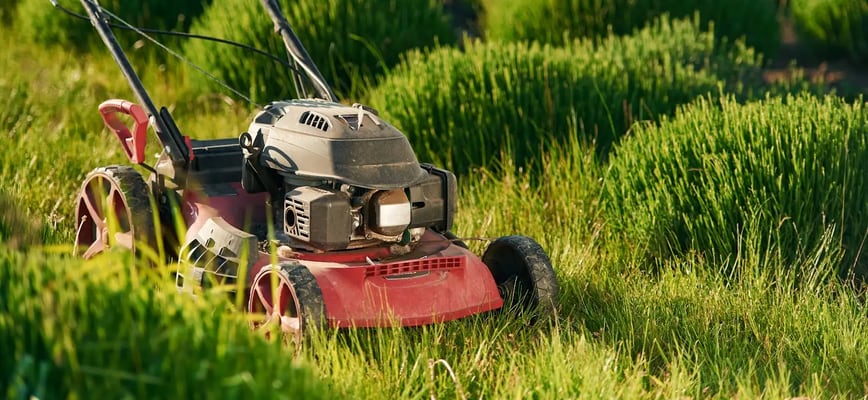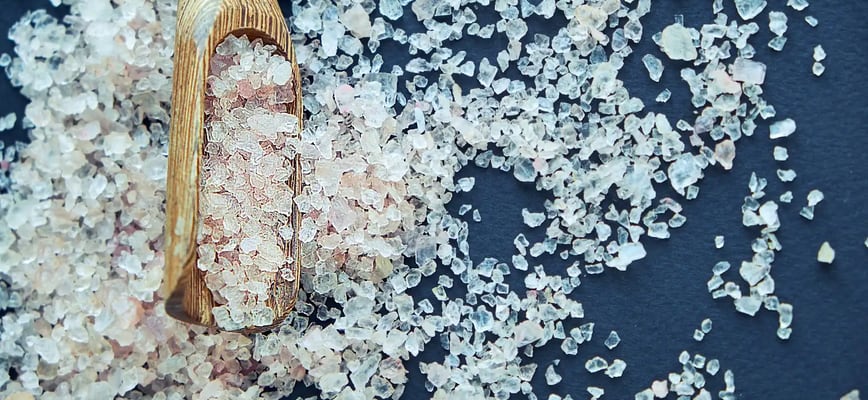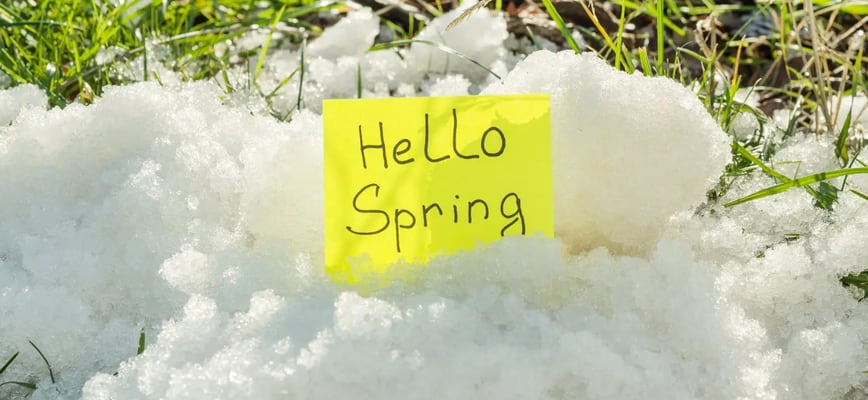Your Neighborhood Lawn Care Provider.

Winter Lawn Care Myths: What Really Helps Your Grass in the Off-Season?
- On February 12 2025
Think lawn care stops in late fall? Think again! When temperatures drop, and your lawn turns brown, it's easy to assume your work is done until spring. But the truth is, what you do — or don't do — during wintertime can have a major impact on the health and appearance of your grass when spring finally arrives.
We've found that sick winter lawns start with one thing: misconceptions. With a bit of knowledge and myth-busting, we can help your lawn not only survive winter but emerge thriving! We hope to address some of the most commonly held myths you've heard about winter lawn care to help you achieve your dream results this spring.

Top Winter Lawn Care Myths in Maryland and Virginia
Myth 1: The Grass is Dead, So Lawn Care Isn't Necessary
Fact: Lawn care is Necessary for your dormant grass.
Phew, where do we begin? Well, here's what's going on in actuality. Your grass doesn't die in the winter. Instead, it goes dormant. When soil temperatures drop, your grass stores all its water and nutrients in the roots in preparation for next spring. Since all the water is removed from the aerial parts, it results in a dry, yellow appearance. But don't worry - come spring, the verdant color will revive once again!
Since your lawn is alive and well, it still needs a close eye and careful consideration throughout the winter months. As we break down more myths, you'll discover some of the prime responsibilities a lawn owner has for protecting their turfgrass's wellness before spring.

Myth 2: Fertilizing Before Winter is Pointless
Fact: All lawns benefit from late fall fertilization.
Even though your lawn's growth has slowed, a winterizer has tremendous lawn health benefits. We highly recommend applying a late fall fertilizer before November 15th every year so it has time to enrich the soil before a freeze. An NPK fertilizing contributes to your grass's dense root growth and environmental tolerances, helping it survive the winter. In addition to improving its long-term winter resistance, it supports a stunning, fresh green-up in spring.
Remember: Lawn fertilizer blackout dates begin November 16th and end March 1st, when fertilizing is illegal in the state of Maryland to protect wildlife habitats.

Myth 3: Mowing Isn't Needed in Late Fall
Fact: Cool-season grasses need mowing until it's growing halts.
Mowing is often helpful until late fall! If your turf is a cool-season variety like Kentucky Bluegrass, you'll probably need to mow well into fall before the ground freezes. While your mowing schedule can be adjusted to account for slower growth, continuing to trim the grass is important. Heavy fall rains and cool temperatures leave turf grasses at risk of mold growth. Regular trimming prevents moisture from getting trapped within the foliage by promoting air circulation and sun exposure.
Cool-season grasses have longer growing seasons due to their cold climate durability, so expect mowing to come to a stop around Thanksgiving day. Warm-season grasses like Bermudagrass will typically go dormant a bit earlier after the first hard frost. As a general rule of thumb, if it's still growing, keep mowing!

Myth 4: Snow is A Grass Killer
Fact: Snow protects your grass from hazardous winter conditions.
Good news! You don't have to worry about that incoming snowfall ravaging your lawn. In fact, winter snowfalls will give you a helping hand around the yard. When your grass becomes covered by an even layer of snow, it becomes insulated and shielded from external threats. A snow blanket prevents heat from escaping the soil, stopping freeze damage in its tracks. It also shields the grass blades from drying winds that would otherwise damage the appearance of your lawn.
Are you expecting incoming snow in Maryland or Virginia? Instead of panicking, praise the weather gods! Don't worry about shoveling snow off your lawn or placing down tarps. Instead, let nature take its course, and you'll be left with protected roots and shoots.

Myth 5: Salt and De-Icers Won't Affect Your Lawn
Fact: Salt and de-icers will permanently damage your lawn.
This is a hard no! Salt and de-icers are the real grass killers in the winter. Thankfully, this is the easiest winter damage to avoid since you have control. As you apply salts and other applications to your walkways and driveways, leave some space between your application area and the edge of your turf. For an added precaution, consider wrapping the borders of your yard with burlap to block rock salt from contacting your grass.
Salt doesn't just dehydrate your grass; it also messes with the biomolecular makeup of your soil. In spring, as temperatures rise, soluble salts will dissolve into melted ice and may seep into the soil. If your lawn is affected by saltwater, apply gypsum and flush deeply with water. The calcium in gypsum reacts with the salt, making it easier to flush away and replenish your soil's health.
Winter Lawn Care Quick Tips Recap
We've covered some of the most popular misconceptions about winter lawn care among Virginia and Maryland homeowners. Now, it's time to put that knowledge to work! Here's a quick refresher of our most essential tips to keep your lawn healthy all season long:
- Your lawn is still alive in the winter, so take care of it.
- Apply a winterizer in the late fall for root growth and spring green-up.
- Mow until your lawn's growth significantly slows around the first soil freeze.
- Snow is your lawn's friend. Keep your lawn covered with snow for insulation and protection.
- Avoid putting de-icers and rock salt near your lawn to prevent dehydration.
Most importantly, remember that lawn care never really stops. To reach your lawn's potential, continual care from yourself or a trusted local lawn care company is fundamental. Try implementing some of these myth-busting tips this winter to see real results when your lawn greens up in spring.

Start Spring Off Strong: Choose Agrolawn!
Since 1995, Agrolawn has developed vibrant green lawns across Maryland and Virginia. By taking winter lawn care practices seriously today, you can be one step closer to a lush yard tomorrow. Contact us today for a head start on your spring lawn care strategy.
